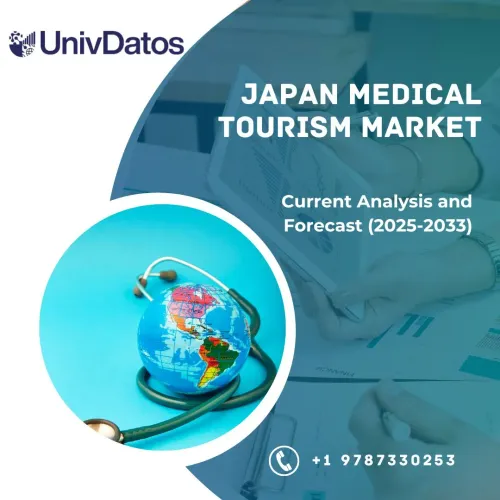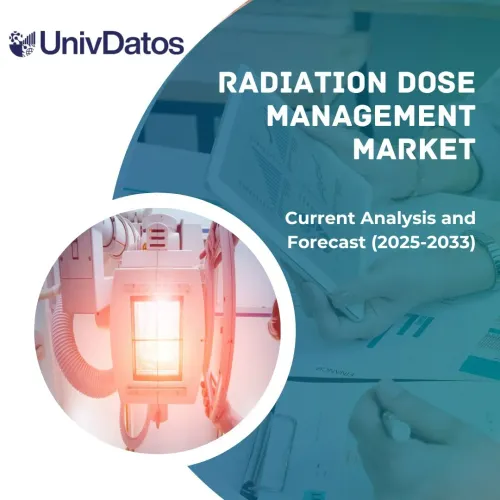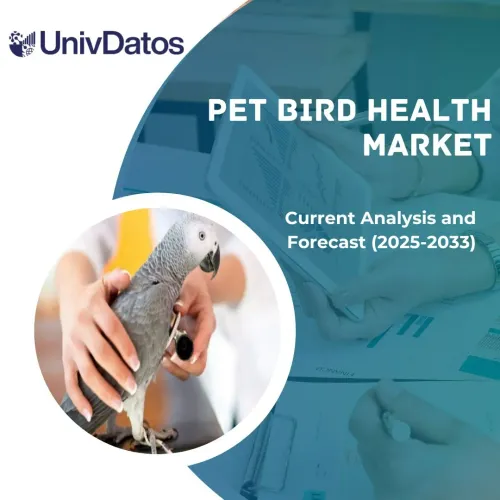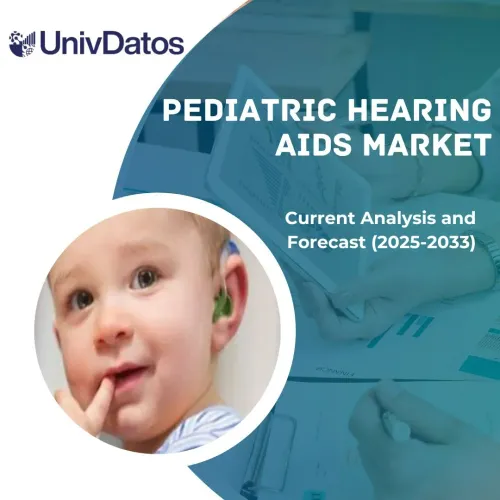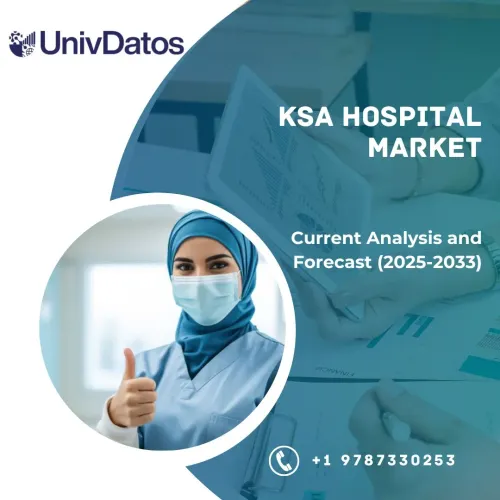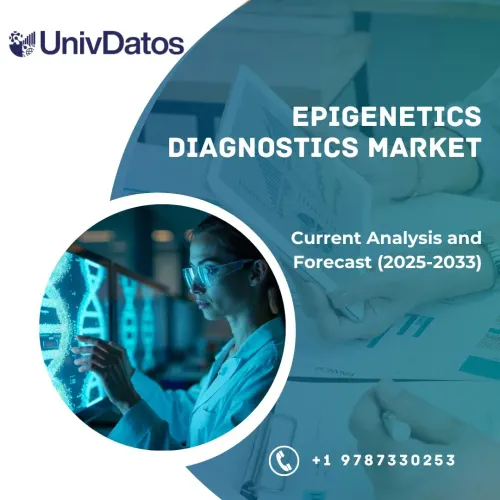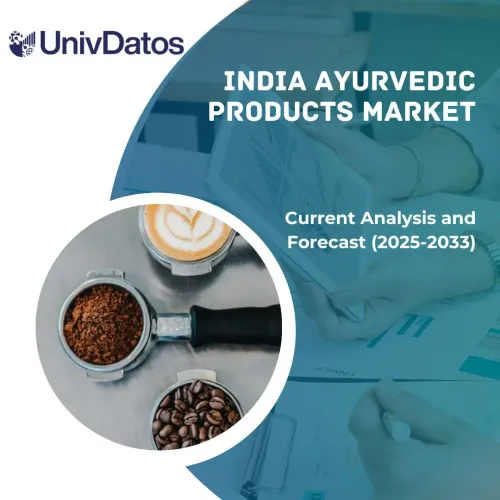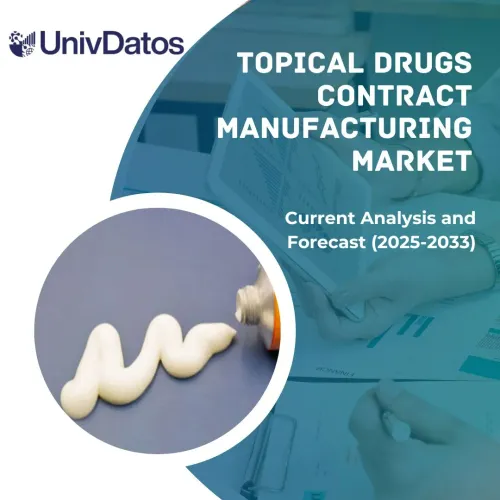Рынок устройств для иммуноадсорбции: текущий анализ и прогноз (2021-2027)
Акцент на типе (селективные, полуселективные, неселективные и другие); продукте (Toxipak, Pentrasorb CRP, Glycosorb ABO, IgEnio, DALI, Monet, Immunsorba TR, Immunsorba, Therasorb, Selesorb, Oxiris, Cytosorb, Toraymyxin, Seraph, Alteco LPS Adsorber и другие); терапевтической области (кардиология, неврология, трансплантология, нефрология и другие); и регионе и стране

ЗАПРОСИТЬ БЕСПЛАТНЫЙ ОБРАЗЕЦ PDF
Ожидается, что мировой рынок устройств для иммуноадсорбции продемонстрирует значительный рост в течение прогнозируемого периода (2021-2027 гг.).Иммуноадсорбция - это экстракорпоральная методика, используемая для удаления специфических антител и молекул групп крови из крови. В настоящее время существует большое количество различных устройств или колонок, каждое из которых имеет свой активный компонент, к которому прикрепляется интересующая молекула, что обеспечивает селективность удаляемых молекул. Возможность выбора различных типов устройств для различных состояний является значительным преимуществом иммуноадсорбции по сравнению с другими методами афереза, поскольку отпадает необходимость в замене таких факторов, как альбумин и плазма. Например, Toxipak от Pocard - это селективное устройство для иммуноадсорбции, используемое при сепсисе и септическом шоке, где другое селективное устройство для иммуноадсорбции Gylcosorb ABO используется при несовместимости по системе ABO. Растущее число случаев кардиологических, неврологических, дерматологических заболеваний в сочетании с растущим вниманием к использованию техники иммуноадсорбции в новых областях, таких как сепсис, увеличивает спрос на устройства для иммуноадсорбции.
Представленные в отчете выводы
«Среди типов сегмент селективных устройств занимал видную долю на рынке в 2020 году»
В зависимости от типа рынок делится на селективные, полуселективные, неселективные и другие. Среди них категория селективных устройств занимала значительную долю рынка и, как ожидается, сохранит свои позиции в течение прогнозируемого периода. Это можно объяснить наличием большого количества устройств для иммуноадсорбции, таких как Toxipak, Pentrasorb CRP, Miro, Glycosorb ABO, ABO Adsopak, Coraffin, IgEnio, DALI, Monet и LDL lipopak. Кроме того, селективное устройство для иммуноадсорбции помогает избирательно нацеливаться на молекулы, не нарушая другие молекулы, поэтому оно обычно используется при аутоиммунных заболеваниях и трансплантации.
«Среди терапевтических областей сегмент кардиологии занимает основную долю на мировом рынке устройств для иммуноадсорбции»
В зависимости от терапевтической области рынок делится на кардиологию, неврологию, трансплантологию, нефрологию и другие. Среди них кардиология занимала значительную долю на рынке из-за большого количества сердечно-сосудистых заболеваний. По данным Всемирной организации здравоохранения (ВОЗ), сердечно-сосудистые заболевания являются основной причиной смерти во всем мире. В 2019 году на них приходилось 32% всех смертей в мире. Кроме того, увеличение численности пожилого населения и изменение образа жизни, вероятно, приведут к увеличению числа случаев в обозримом будущем. Это, в свою очередь, как ожидается, увеличит спрос на устройства для иммуноадсорбции.
«Северная Америка заняла значительную позицию на рынке устройств для иммуноадсорбции»
Для лучшего понимания принятия на рынке устройств для иммуноадсорбции рынок анализируется на основе его присутствия в таких странах, как Северная Америка (США, Канада, остальная часть Северной Америки), Европа (Германия, Великобритания, Франция, Италия, Испания и остальная часть Европы), Азиатско-Тихоокеанский регион (Китай, Япония, Индия, Австралия и остальная часть APAC) и остальной мир. Северная Америка занимает значительную долю на рынке и, как ожидается, продемонстрирует существенный рост в течение прогнозируемого периода благодаря развитой инфраструктуре здравоохранения, большим расходам в сфере здравоохранения в сочетании с внедрением новых технологий в регионе.
Причины купить этот отчет:
- Исследование включает анализ размеров рынка и прогнозирование, подтвержденные проверенными ключевыми экспертами отрасли
- Отчет представляет собой краткий обзор общей производительности отрасли с первого взгляда
- Отчет содержит углубленный анализ выдающихся представителей отрасли с основным акцентом на ключевые финансовые показатели бизнеса, продуктовый портфель, стратегии расширения и последние разработки
- Подробное изучение движущих сил, ограничений, ключевых тенденций и возможностей, преобладающих в отрасли
- Исследование всесторонне охватывает рынок по различным сегментам
- Углубленный анализ отрасли на уровне стран
Варианты настройки:
Мировой рынок устройств для иммуноадсорбции может быть дополнительно настроен в соответствии с требованиями или любым другим сегментом рынка. Кроме того, UMI понимает, что у вас могут быть свои собственные потребности бизнеса, поэтому не стесняйтесь связаться с нами, чтобы получить отчет, который полностью соответствует вашим требованиям.
Содержание
Анализ исторического рынка, оценка текущего рынка и прогнозирование будущего рынка устройств для иммуноадсорбции - три основных шага, предпринятых для создания и анализа его внедрения по всему миру. Были проведены исчерпывающие вторичные исследования для сбора исторических рыночных показателей и оценки текущего размера рынка. Во-вторых, для подтверждения этих данных были приняты во внимание многочисленные выводы и предположения. Кроме того, были проведены исчерпывающие первичные интервью с отраслевыми экспертами по всей цепочке создания стоимости отрасли устройств для иммуноадсорбции. После предположения и проверки рыночных показателей с помощью первичных интервью мы применили восходящий подход для прогнозирования общего размера рынка. После этого были приняты методы разбивки рынка и триангуляции данных для оценки и анализа размера рынка сегментов и подсегментов, к которым относится отрасль. Подробная методология объяснена ниже:
Получить более подробную информацию о методологии исследования
Анализ исторических размеров рынка
Шаг 1: Углубленное изучение вторичных источников:
Был проведен подробный вторичный анализ для получения исторических размеров рынка устройств для иммуноадсорбции из внутренних источников компании, таких какгодовые отчеты и финансовые отчеты, презентации о результатах деятельности, пресс-релизы и т. д.,и внешние источники, включаяжурналы, новости и статьи, правительственные публикации, публикации конкурентов, отраслевые отчеты, сторонние базы данных и другие заслуживающие доверия публикации.
Шаг 2: Сегментация рынка:
После получения исторических размеров рынка устройств для иммуноадсорбции мы провели подробный вторичный анализ для сбора текущей информации о рынке и долей для различных сегментов и подсегментов для основных регионов. Основные сегменты, включенные в отчет, по типу, продукту и терапевтической области. Кроме того, были проведены анализы на региональном и страновом уровне для оценки общего внедрения устройств для иммуноадсорбции во всем мире.
Шаг 3: Факторный анализ:
После получения исторических размеров рынка различных сегментов и подсегментов мы провели подробныйфакторный анализдля оценки текущего размера рынка устройств для иммуноадсорбции. Кроме того, мы провели факторный анализ с использованием зависимых и независимых переменных, таких как растущее пожилое население и увеличение расходов на сектор здравоохранения. Был проведен тщательный анализ сценария спроса и предложения с учетом увеличения инвестиций, ведущих партнерств, слияний и поглощений, расширения бизнеса и запуска продуктов в отрасли устройств для иммуноадсорбции.
Оценка и прогноз текущего размера рынка
Оценка текущего размера рынка:Основываясь на практических выводах из вышеуказанных 3 шагов, мы пришли к текущему размеру рынка, ключевым игрокам на мировом рынке устройств для иммуноадсорбции и долям рынка каждого сегмента. Все необходимые доли процентов, разделения и разбивки рынка были определены с использованием вышеупомянутого вторичного подхода и были подтверждены посредством первичных интервью.
Оценка и прогнозирование:Для оценки и прогнозирования рынка веса были присвоены различным факторам, включая движущие силы и тенденции, ограничения и возможности, доступные для заинтересованных сторон. После анализа этих факторов были применены соответствующие методы прогнозирования, т. е. восходящий подход, для достижения прогноза рынка до 2027 года для различных сегментов и подсегментов в основных регионах мира. Методология исследования, принятая для оценки размера рынка, включает в себя:
- Размер рынка отрасли в стоимостном выражении (доллары США) и уровень внедрения устройств для иммуноадсорбции на основных рынках
- Все доли, разделения и разбивки сегментов и подсегментов рынка в процентах
- Ключевые игроки на рынке устройств для иммуноадсорбции. Кроме того, стратегии роста, принятые этими игроками для конкуренции на быстрорастущем рынке.
Проверка размера и доли рынка
Первичные исследования:Были проведены углубленные интервью с ключевыми лидерами мнений (KOL), включая руководителей высшего звена (CXO/VP, руководители по продажам, руководители по маркетингу, руководители по операционной деятельности, региональные руководители, руководители стран и т. д.) в основных регионах. Затем были обобщены результаты первичных исследований и проведен статистический анализ для подтверждения заявленной гипотезы. Данные первичных исследований были консолидированы с вторичными данными, что позволило превратить информацию в практические выводы.
Разделение основных участников по заинтересованным сторонам и регионам
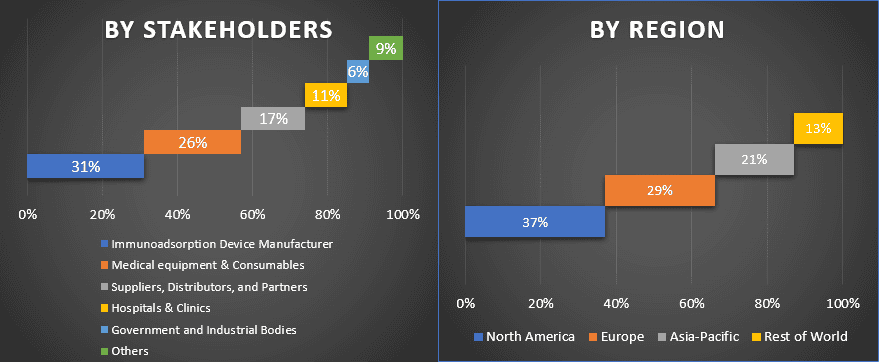
Инженерия рынка
Для завершения общей оценки рынка и получения точных статистических данных по каждому сегменту и подсегменту мирового рынка устройств для иммуноадсорбции была применена методика триангуляции данных. Данные были разделены на несколько сегментов и подсегментов после изучения различных параметров и тенденций в области типов, продуктов и терапевтических областей.
Основная цель исследования рынка устройств для иммуноадсорбции
В исследовании были определены текущие и будущие тенденции мирового рынка устройств для иммуноадсорбции. Инвесторы могут получить стратегическую информацию для принятия решений об инвестициях на основе качественного и количественного анализа, проведенного в исследовании. Текущие и будущие тенденции рынка определят общую привлекательность рынка на уровне страны, предоставляя участникам отрасли платформу для использования неиспользованного рынка и получения преимущества первопроходца. Другие количественные цели исследований включают:
- Проанализировать текущий и прогнозируемый размер рынка устройств для иммуноадсорбции в стоимостном выражении (долл. США). Кроме того, проанализировать текущий и прогнозируемый размер рынка различных сегментов и подсегментов
- Сегменты исследования включают области типов, продуктов и терапевтических областей
- Определенный анализ нормативной базы для отрасли устройств для иммуноадсорбции
- Проанализировать цепочку создания стоимости, связанную с присутствием различных посредников, а также проанализировать поведение клиентов и конкурентов в отрасли
- Проанализировать текущий и прогнозируемый размер рынка устройств для иммуноадсорбции для основных стран
- Основные регионы/страны, проанализированные в отчете, включают Северную Америку (США, Канада, Остальная часть Северной Америки), Европу (Германия, Великобритания, Франция, Италия, Испания, Остальная часть Европы), Азиатско-Тихоокеанский регион (Китай, Япония, Индия, Австралия, Остальная часть Азиатско-Тихоокеанского региона) и Остальной мир
- Профили компаний игроков рынка устройств для иммуноадсорбции и стратегии роста, принятые ими для устойчивого развития на растущем рынке
- Углубленный анализ отрасли на уровне страны
Связанные Отчеты
Клиенты, купившие этот товар, также купили

